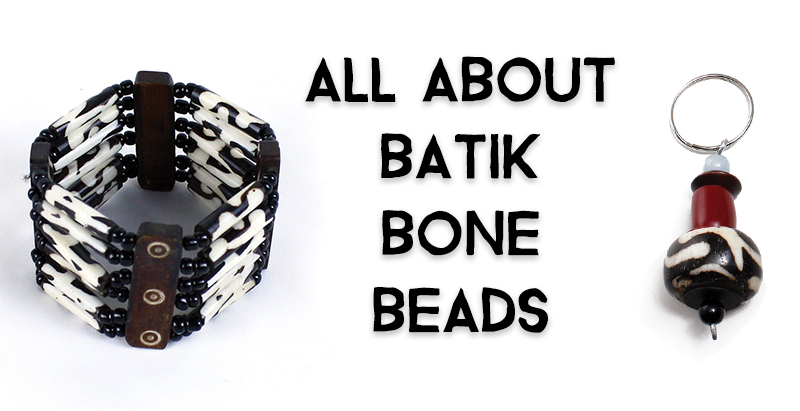
Many of our bracelets and jewelry are made from batik bone beads. These bone beads are products of Ghanian and Kenyan tribes people. The process to create this beads can go back to 4th century BC Egypt. It was originally a means to apply patterns to cloth and was adopted by African tribes to apply to beads to and accessories often symbolic of higher social status. Batik bone beads are made from the bones of agricultural animals like the cow or camel. They are bleached using a simple dye and heat process. Some others are darkened by age. Designs would be carved into the bones. Exceptional craftsmen would create the design during the wax-resistance process, painting on swirl or circular motifs with clear beeswax. Beeswax is vital to the Batik dyeing process, due to it’s resistant properties. When applied hot to bone beads, it would be allowed to dry briefly – sinking into the bone, coating it with a lacquer finish that dye could not penetrate.
Batik dyes are generally developed using natural resources such as tree bark, sap and plant extract. Darker blue/ black dyes were created using flowers from indigo plants. Batik Bone Beads require little in the way of preparation prior to the dyeing process. Occasionally, bone may be boiled to soften it slightly. It was thought to make it more absorbent for dyeing, and more adhesive to wax. Bone beads also tend to be extremely polished. The length of time a bead would remain dipped into a dye depended upon the effect to be achieved. Starkly contrasting colors of brown-black and pure white were achieved by leaving the bead to “soak” for longer within the dye.

Many of our bone jewelry come in a variety of designs and shapes and
colors. No two bone bracelets are the same as they are made by hand. Scroll through our list of products using bone.
Check out our huge selection of affordable African products at our website!
Find out HOW TO START YOUR OWN BUSINESS selling African products!
 USD
USD  GBP
GBP  CAD
CAD  AUD
AUD 